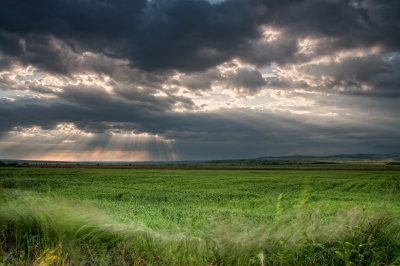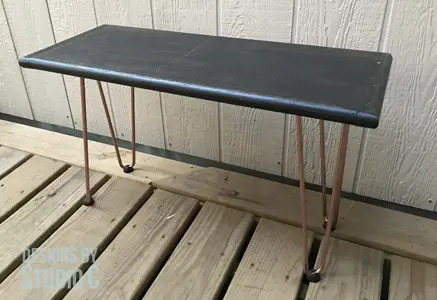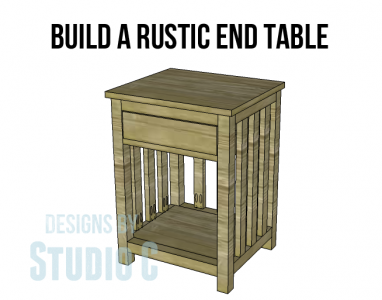6 Steps to Take Before a Big Storm Comes Your Way
This summer, people who live in various parts of the country may have to be more aware of the potential for hurricanes or serious thunderstorms. Weather experts are predicting a moderate hurricane season for the region, and it’s important for homeowners to prepare ahead of time so they don’t get caught up in the storm’s damage. Prime hurricane season begins in June and lasts throughout the early fall, so there’s still time to get ready. Here are 6 steps you should take to help ready your property for a big storm this summer.
1. Create an Emergency Plan
To create an effective emergency plan, it’s crucial to prioritize the safety and well-being of your family. When a powerful storm is approaching, it can bring about unexpected changes in its path, resulting in damaging winds, heavy rainfall, and potential power outages. In order to be prepared, the first step is to assemble an emergency survival kit.
Your emergency survival kit should include essential items that will help you and your family navigate through the storm. Start by gathering items such as candles, matches, flashlights, batteries, first-aid supplies, non-perishable foods, and a battery-powered radio. These items will prove invaluable in case of power outages or other emergencies that may arise during the storm.
Candles and matches will provide you with a source of light when electricity is unavailable. Flashlights and batteries are essential for illuminating your surroundings and ensuring your safety. First-aid supplies are crucial for addressing any injuries that may occur during the storm. Non-perishable foods will sustain you and your family in case you are unable to leave your home for a few days. Lastly, a battery-powered radio will keep you informed about the latest updates and emergency instructions.
By creating an emergency survival kit, you are taking the necessary steps to ensure the safety and well-being of your family during a storm. This proactive approach will provide you with peace of mind and the ability to handle any challenges that may arise.

Image courtesy of prozac1 at FreeDigitalPhotos.net
2. Survey the Trees on Your Property
When a powerful storm comes through, one of the most common things it leaves behind is debris from trees. Falling branches and trees can cause serious damage to your home or your car if they are in the line of destruction. Homeowners can prepare ahead of time and make their property a little safer by checking out any potential branch hazards or unstable trees that may be in danger of falling.
Surveying the trees on your property is an important step in preventing storm damage to your home. Start by visually inspecting each tree for any signs of decay, disease, or damage. Look for dead or dying branches, cracks in the trunk, or leaning trees. These are all indications that the tree may be unstable and more susceptible to falling during a storm.
It’s best to call a professional tree expert to help remove dead or dying trees so they don’t get caught in the storm. They have the knowledge and equipment to safely assess the condition of your trees and take appropriate action. They can also trim back any overhanging branches that could potentially cause damage to your property.
Taking the time to survey the trees on your property and address any potential hazards before a storm hits can save you from costly repairs and ensure the safety of your home and family. Don’t wait until it’s too late – be proactive and take the necessary steps to protect your property.
3. Buy a Generator
Long power outages are common for hurricanes, and they can also come along with a powerful summer thunderstorm. Today, you can prepare for a power outage, no matter what causes it, by investing in a portable generator. Homeowners can keep their essential appliances running if the power goes out by turning on the generator and avoid having their refrigerated foods spoiling. It’s important to keep your generator outside away from doors and windows so you aren’t at risk of carbon monoxide poisoning.
When buying a generator, there are a few key factors to consider. First, determine your power needs. Calculate the wattage of the appliances and devices you want to run during an outage to ensure you choose a generator with sufficient capacity. Next, decide between a portable generator or a standby generator. Portable generators are more affordable and can be moved around, while standby generators are permanently installed and automatically turn on when the power goes out.
Consider the fuel type as well. Most portable generators run on gasoline, but there are also models that run on propane or natural gas. Propane and natural gas generators are more convenient as they don’t require refueling, but they may have higher upfront costs. Additionally, think about noise levels, maintenance requirements, and safety features when making your decision.
Buying a generator is a proactive step in preparing for a storm or any power outage. By having a generator on hand, you can ensure the comfort and safety of your family during extended periods without electricity. Don’t wait until it’s too late – invest in a generator today and be ready for whatever comes your way.

Image courtesy of fantasista at FreeDigitalPhotos.net
4. Secure Outside Furniture
To prevent storm damage to your home and ensure the safety of your family, it’s important to secure any loose items outside, including furniture. During a storm with high winds, these items can become dangerous projectiles that can cause significant damage or harm to people.
Start by bringing smaller pieces of furniture inside your home or garage. This will help protect them from being blown away or damaged by the strong winds. For larger items that cannot be easily moved, such as patio tables or outdoor sofas, it’s crucial to secure them in place.
One effective method is to tie down your furniture using strong ropes or straps. Anchor the furniture to a sturdy structure, such as a tree or a heavy object that won’t be easily moved by the wind. Make sure the ropes are tightly secured to prevent any movement during the storm.
If tying down the furniture is not possible, consider using sandbags or heavy objects to weigh them down. Place these weights on top or around the furniture to provide stability and prevent them from being lifted by the wind.
Remember to also secure any other loose items in your yard, such as bikes, grills, or garden decorations. These items should be stored in a secure location or tied down to prevent them from causing damage or injury.
By taking the necessary steps to secure your outside furniture and other loose items, you can minimize the risk of storm damage to your home and ensure the safety of your property and loved ones.
5. Check Out Your Roof
A dangerous summer storm may also bring significant rainfall to your area along with high winds. In most cases, your roof should be able to withstand hours of heavy rain, but you can ensure your property is primed to prevent roof damage.
Start by inspecting your gutters and clearing them of any debris. Clogged gutters can cause water to overflow and accumulate on your roof, leading to leaks and potential structural damage. Ensure that the gutters are securely attached and that there are no loose connections in the downspouts. This will help to direct the water away from your home and prevent it from pooling on your roof.
Additionally, it’s a good idea to check the condition of your roof shingles. Look for any signs of damage, such as missing or cracked shingles, and replace them as necessary. Damaged shingles can allow water to seep into your home, causing leaks and water damage.
If you’re unsure about the condition of your roof or if you notice any issues, it’s recommended to call a professional roofing company, like KY-KO Roofing, for a thorough inspection. They can identify any potential problems and provide the necessary repairs or maintenance to ensure your roof is in top shape before the storm hits.
By taking the time to check out your roof and address any issues beforehand, you can prevent storm damage to your home and avoid costly repairs in the future.
6. Monitor the News
Monitoring the news is a crucial step in preparing for a big storm. By staying informed about the weather conditions, you can take timely action to protect your home and family. During the summer or early fall season, when the risk of strong thunderstorms, tornadoes, or hurricane conditions is high, it’s important to regularly check the weather forecast.
Pay attention to any alerts or warnings issued by local authorities or meteorological agencies. These alerts may advise you to move to higher ground or take shelter in place during a tornado or severe storm. It’s essential not to ignore these warnings and to follow the guidance of experts. Ignoring such alerts can put your safety at risk.
In addition to checking the weather forecast, consider signing up for emergency alerts through your local government or weather apps. These alerts can provide real-time updates and important information about approaching storms or dangerous weather conditions.
By monitoring the news and staying informed, you can make informed decisions about when to take action to protect your home and loved ones. Remember, it’s better to be prepared and proactive than to be caught off guard by a big storm.

Image courtesy of bplanet at FreeDigitalPhotos.net
Conclusion
By following the six steps outlined in this article, you can significantly reduce the risk of storm damage to your home. Creating an emergency plan is the first and most important step. This plan should include evacuation routes, a designated meeting place for your family, and a list of emergency contacts. By having a plan in place, you can act quickly and efficiently when a storm is approaching.
Surveying the trees on your property is another crucial step. Weak or damaged trees can pose a significant threat during a storm, as they are more likely to fall and cause damage to your home. By identifying and addressing any potential issues with your trees, you can minimize the risk of them causing damage during a storm.
Investing in a generator is also highly recommended. A generator can provide power to your home during an outage, allowing you to keep essential appliances and systems running. This can help prevent food spoilage, keep your home comfortable, and ensure that you have access to important communication devices.
Securing outside furniture is a simple yet effective way to prevent damage during a storm. Strong winds can easily pick up and throw objects, turning them into dangerous projectiles. By securing or bringing inside any outdoor furniture, you can minimize the risk of it causing damage to your property or others.
Checking out your roof is another important step. Loose or damaged shingles can be easily blown off during a storm, leading to leaks and further damage. By inspecting your roof and addressing any issues beforehand, you can prevent water from entering your home and causing extensive damage.
In conclusion, by taking these six steps before a big storm, you can significantly reduce the risk of damage to your home. Being prepared and proactive is key to protecting your property and ensuring the safety of your loved ones. Don’t wait until it’s too late – start preparing today.





